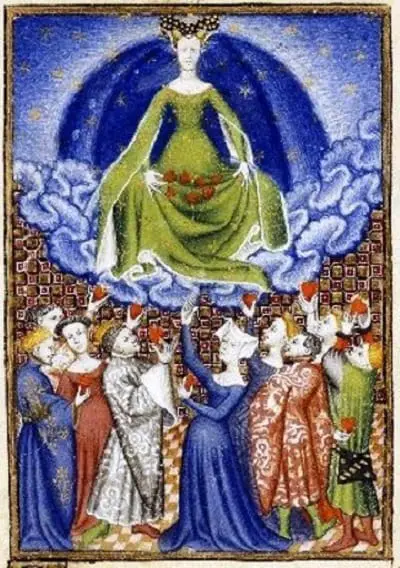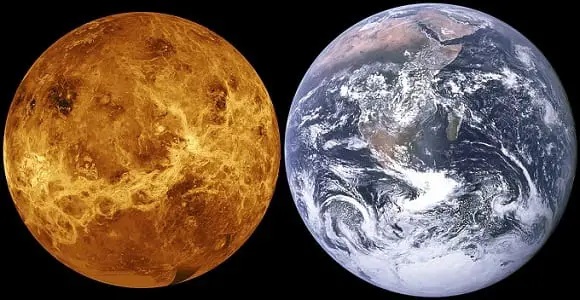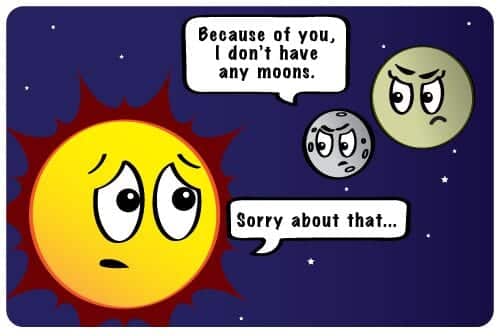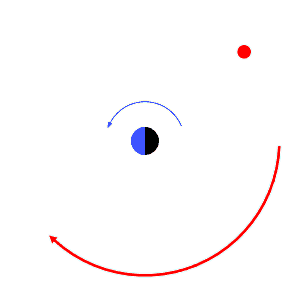Our solar system still has so many deep secrets to be unfolded. One of them is mysterious facts about Venus. As you know, Venus is the second brightest object in the night sky and one of the four terrestrial planets in our solar system.
Apart from these well known Planet Venus facts, in this article, I will give you the ultimate guide to the top 6 facts about venus you never knew. Not to mention, if you like this article, don’t forget to share it with your family and friends.
The Ultimate Guide to Top 6 Facts About Venus
- By definition, Venus has two different names
- Planet Venus is like another Earth
- A Venusian day is longer than a Venusian year
- Venus is like a ball of carbon dioxide
- Sun doesn’t allow Venus to have Moons
- On Venus, the sun rises in the west and sets in the east
By Definition, Venus has Two Different Names
The very first one in my list of the ultimate guide to the top 6 facts about Venus is that how did venus get its name?? In fact, Planet Venus has two different names, of course, depending upon the culture and place you are from.
Eastern Perception
As I hail from India, so at first, I will tell you the Indian perception of that how did venus get its name? Well, according to the sacred Indian scriptures, Venus planet is known as Shukra Graha (Planet).
In Hindu mythology, Shukra was an ancient Indian sage of the Vedic Era. He was popularly known as Shukracharya or Asuracharya – meaning the Guru or counselor of Asuras (Demons). In Sanskrit – Shukra also means Clear or bright.
Similarly, for Indonesian or Malaysian people – Venus is known as Kejora or like for Chinese, Japanese, or Korean people – they called it the Metal Star.
Western Perception

Well, according to the western perspective, Venus is named after the Roman goddess of love and beauty i.e Goddess Venus.
On the other hand, if I talk about antiquity time, the Sumerian people associated Earth’s twin planet to their Goddess Inanna (also known as Ishtar to ancient Babylonians or Akkadian people).
Similarly in different cultures, like in ancient Mayan culture, they called the venus planet as “the great star”. In fact, Friday (Shukravaar) is also regarded as the day of Venus Planet (Shukra Graha).
Planet Venus is Like Another Earth

Unlike all the other planets of the solar system, the Venusian surface is comparatively smooth. One of the most important features of venus is its similarity with our natural habitat i.e Earth.
In other words, according to the available information, there is a huge similarity between the composition of earth and venus in the case of mass, size of venus, and its density.
I mean, that’s why scientists came up with the conclusion that just like earth, venus has a similar internal structure in terms of crust, mantle, and core.
Take a look into Jupiter Facts – Top 6 Interesting Facts About Jupiter
Planetary scientists and geologists conclude that venus has a molten core. On the other hand, if we compare the size of venus with Earth, the radius of venus is approximately about 6052 km (only 319 km less than the earth’s radius).
Because of all the above-mentioned similarities, Planet Venus is famously known as the Earth’s sister plant or twin planet. To put it differently, I can conclude that planet venus is like another earth.
A Venusian Day is Longer Than a Venusian Year
Yup, you heard me right. One of the bizarre facts about venus is that a day on Venus is longer than a year. The length of the day on Venus is equal to 243 Earth’s day. Therefore, making the venus period of rotation – the longest in the solar system.
On the other hand, if I talk about how long is a year on venus; a Venusian year takes about 225 Earth’s days. In other words, you can say that a Venusian day is longer than a Venusian year.
Venus is Like a Ball of Carbon Dioxide

The next one in my list of the ultimate guide to the top 6 facts about Venus is the atmospheric composition of Venus. Well, even though Venus is regarded as Earth’s twin planet, Venus’s atmospheric features are totally opposite.
I mean if I talk about the composition of Venus’s atmosphere, it is mostly made of carbon dioxide which contributes to 96.5 percent of its total constituent.
On the other hand, just 3 percent of the Venusian atmosphere is made up of nitrogen, leaving less than 1 percent for any other gases.
Recommended, Mars Fact -Top 6 Interesting Facts About Mars
Due to its extremely dense atmosphere, the mass of the Venusian atmosphere is 93 times compared to the earth’s atmosphere.
Similarly, Venus’s atmospheric pressure is 92 times the earth’s atmospheric pressure. In other words, Venus’s atmospheric pressure is analogous to the pressure felt deep beneath the ocean on earth.
Carbon dioxide makes Venus Hotter than Mercury
Well, People often wonder how hot is venus? Or, sometimes even ask, why Venus is hotter than mercury? I mean if we think rationally, then Mercury is the closest planet to the sun. But, still why Venus is hotter than mercury?
The answers to all these kinds of queries can be found in the vicinity of the atmosphere of Venus. Its dense carbon-dioxide-rich atmosphere does not allow heat to leave by causing the strongest greenhouse effect of the solar system.
That’s why the average venus surface temperature is 864° Fahrenheit, approximately 64° Fahrenheit hotter than Mercury. Some scientists also proposed that its smallest axial tilt i.e 3° could be the reason for the fact that why Venus is hotter than mercury.
If you don’t know, the smaller the axial tilt of a planet, the smaller will be the chances for the regulation of season on the planet.
Sun Doesn’t Allow Venus to Have Moons

The answers to the questions like does venus have moons or how many moons does Venus have is BIG NO!! Venus does not have any moon.
Ahh, don’t feel sad for venus. I mean Venus is not the only planet in the solar system that does not have any moon. All the planets have their own natural satellite. The only two exceptions are the planet Venus and Mercury.
Well, some astronomers and theoretical physicists theorized that due to it’s proximity to the sun, Venus does not have any moon.
In my view, it could be true because if I talk about venus distance from the sun – Venus is only 108.56 million kilometers away from the sun.
Check out, Indeed, the moon is moving away from earth, BUT WHY?
On the other hand, some astronomers suggest that maybe venus did had a moon in the distant past. Not to mention, some scientific data even predicts that because of Venus’s retrograde motion, venus does not have any natural satellite of its own.
On Venus, The Sun Rises in The West And Sets in The East

One of the mind-boggling and most interesting facts about Venus is Venus’s retrograde motion. Ahh, don’t baffle yourself.
Retrograde motion means that when a planet spins or rotates in the opposite or backward direction (see above figure) compared to the other planets of the solar system.
In other words, almost all the planets in our solar system rotate in prograde or direct motion. The only exceptions are Uranus and Venus, of course. They both rotate in the opposite direction to its primary i.e The Sun.
In layman, I can conclude that on the Venusian surface, the sun rises in the west and sets in the east. The backward rotation of venus has been known to humans for centuries but the question arises why?
Why Venus Spins The Wrong Way?
Well, there are so many controversial explanations regarding the planet Venus’s retrograde motion. Sadly, none of them is completely acceptable.
One of the research team said that maybe due to its collision with some big asteroid or celestial object in the distant past; it simply flipped its axis by 180°. In layman, venus is still rotating in the same direction, just upside down. That’s why the sun rises in the west and sets in the east on the Venusian surface.
On the other hand, another group of scientists argues that perhaps at some point in the distant past, due to its ever slowing period of rotation; Venus halted and reversed its direction.
Well, who knows, what could happen next with venus. I mean Venus still has the slowest period of rotation as compared to the other planets of the solar system.
Then maybe again in the near future, it could again reverse its direction of rotation and rotates like all the other planets of our solar system. What do you think? Is this possible?
That’s it for this post. If you like this article, share it if you like it, like it if you share it. You can also find us on Mix, Twitter, Pinterest, and Facebook.
